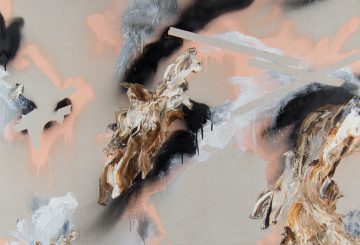Lawson-Menzies announced last Thursday that they would break with the solidarity of other auction houses and begin paying royalties to artists on the resale of their artworks.
“We are delighted to combine a commercial venture with a tangible community benefit,” Lawson Menzies chief executive Paul Sumner said yesterday.
But before artists start rejoicing in the streets over the news that they’re going to see cheques and cash flowing into their bank accounts from the multimillion dollar secondary market, the money is only going to Aboriginal artists and then not actually to them, but to a “foundation” who will administer Lawson-Menzies donation of 2 per cent per sale item.
Mr Sumner, who expects to raise $100,000 from the first four auctions, said a foundation would ensure money was delivered “not just back to a single artist, but back to the community at large.
He said the resale royalty scheme proposed by the Government last year would be “a highly unsuccessful arrangement” if money was paid to individual creators.
“There is a big gap between the haves and the have-nots – the introduction of a back-to-the-artist system will further broaden that breach,” Mr. Sumner said.
“We are taking a lead because we want to introduce a model that actually has a benefit, rather than a politically created system which simply won’t work and might cause more problems than it solves.”
Putting aside the tangled and complicated argument over whether artists actually deserve a resale royalty, the questions raised by this announcement are many. While money going “back to the community” sounds like a good idea, The Art Life wonders why the artists just can’t get paid? Sumner claims it would be “a highly unsuccessful arrangement” to give the artists the benefit of their own creative efforts, deciding instead to hand over the cash to a foundation that will make the decision of what to do with the money rather than trusting the artist to do it themselves.
How a foundation would address the “gap between the haves and the have-nots” is unclear, but it’s hardly a secret that Aboriginal artists who have made real money from their work have disbursed it as they saw fit, usually to extended families and friends. As to what the artists, their families and their friends then do with the money is entirely up to them.
The underlying sentiment of the Lawson-Menzies announcement is that Aboriginal people are unable to make a decision for themselves and have to be helped with the onerous job of spending their own money. The Australian’s story concludes that “Sotheby’s has invested in dialysis programs for Aborigines in remote Australia and encourages its clients to donate a portion of art proceeds to indigenous charities.” Well, good on you Sotheby’s for recognising the continuing embarrassment of a multinational corporation profiting from the most disenfranchised section of the Australian community.
While no one would sensibly criticise donations for good causes, the real problem is how Aboriginal artists get paid in the first place. Only a minority of Aboriginal artists enjoy anything like the normal artist-gallery relationship and accept cash-in-hand (or in-kind) payments instead.
And why would Aboriginal artists accept money upfront? For the simple reason that on the remote communities where the majority of the Aboriginal artists live, there are no facilities and there is no employment. Under those circumstances, taking cash is the best option. While it’s understood that there are social problems associated with rural poverty, taking the decision-making power out of the hands of the people with the least amount of say in the way their lives are run already is not going to help. Until the root causes of the disparity between black and white Australia are seriously addressed, schemes like Lawson-Menzies are little more than an insult, a PR-led band aid that just happens to assuage corporate guilt. Can you imagine the outcry if Roslyn Oxley decided she would put Tracey Moffatt and Destiny Deacon‘s incomes into trust rather than let them spend it themselves? It would be outrageous – but no more outrageous than this proposal.

